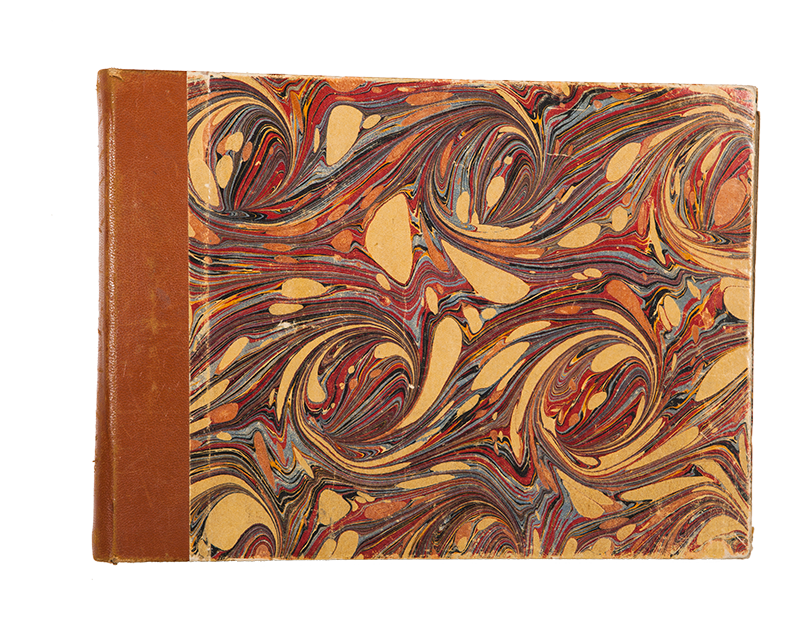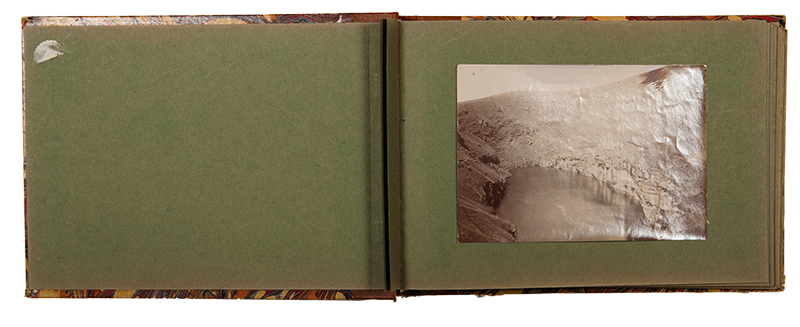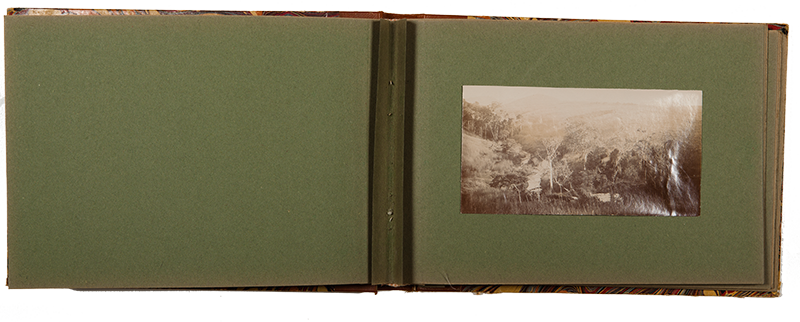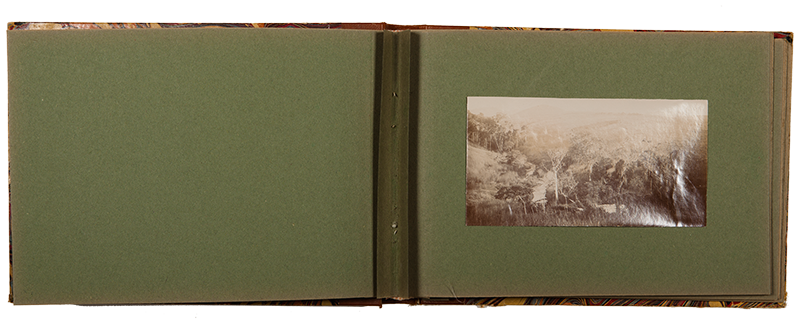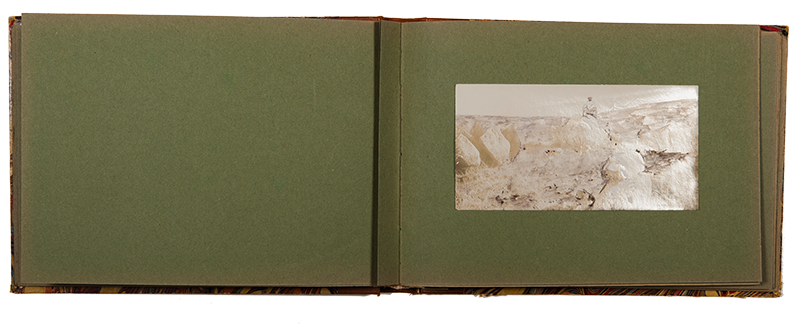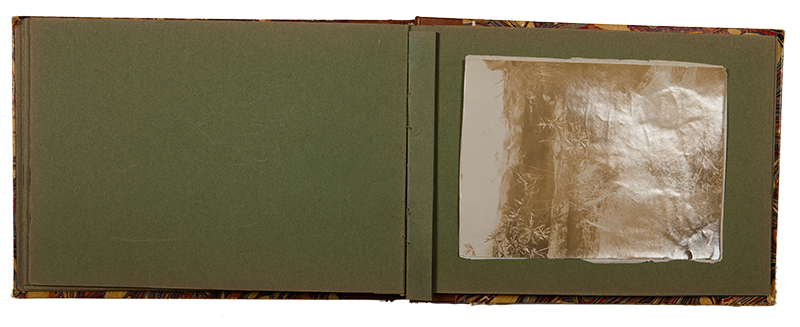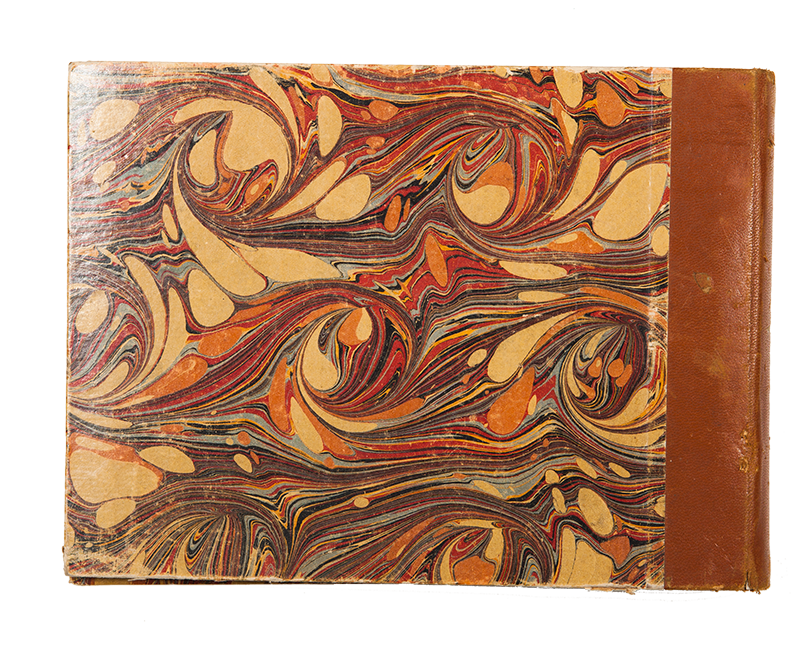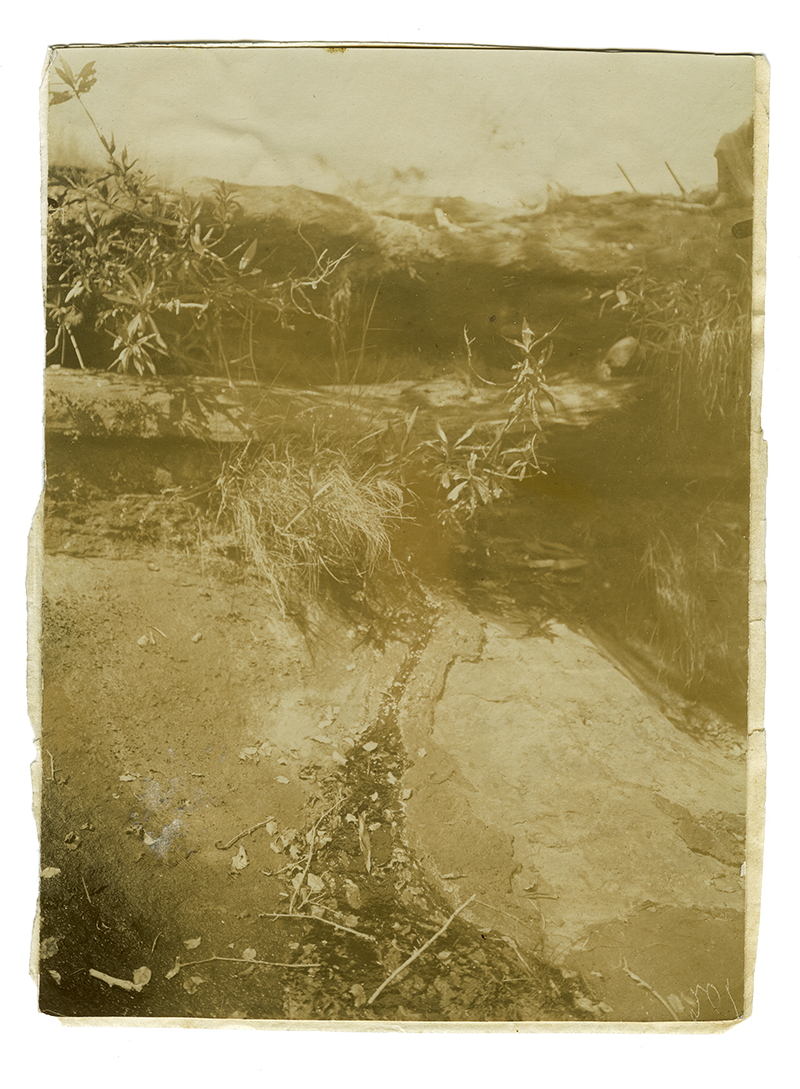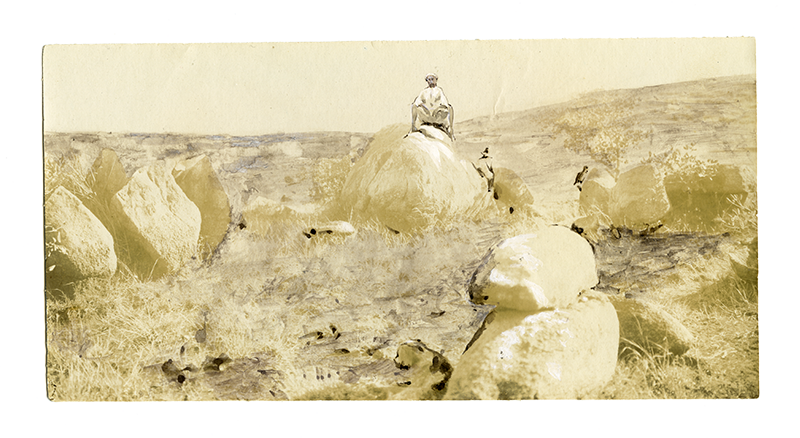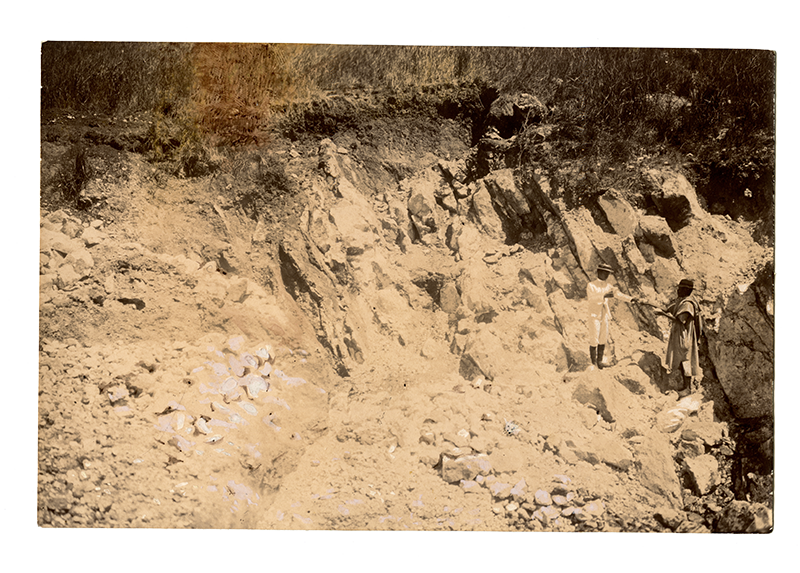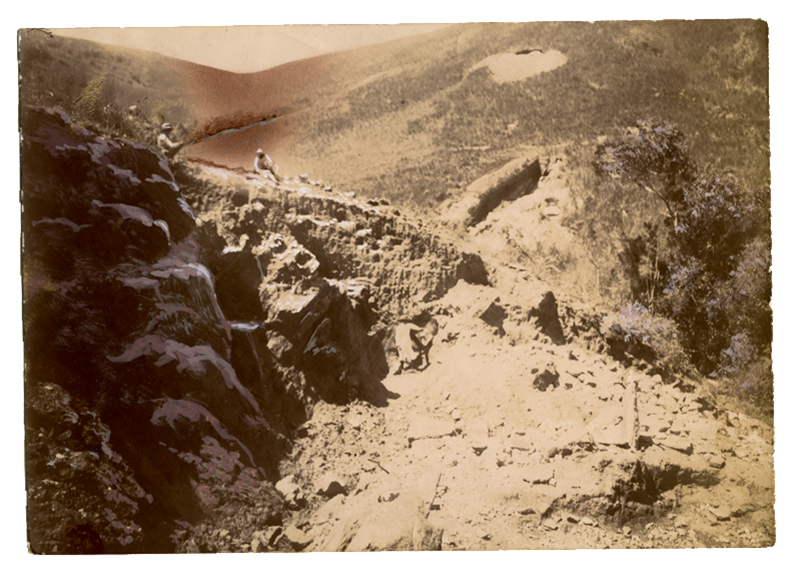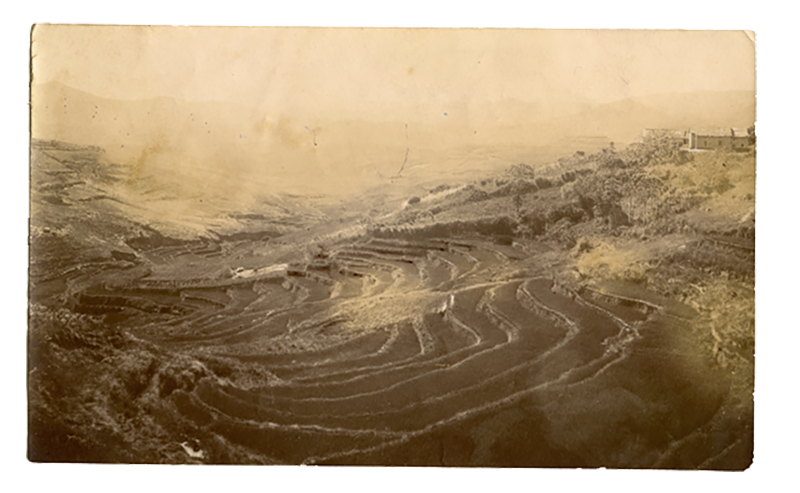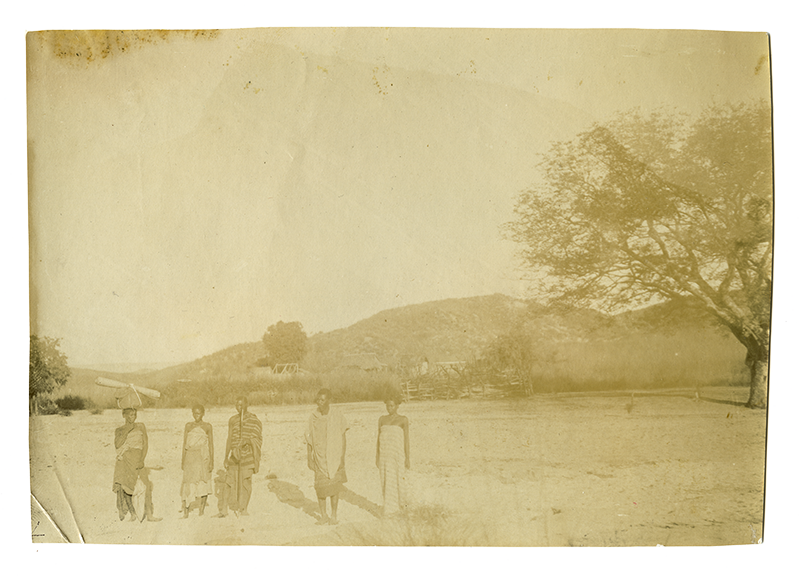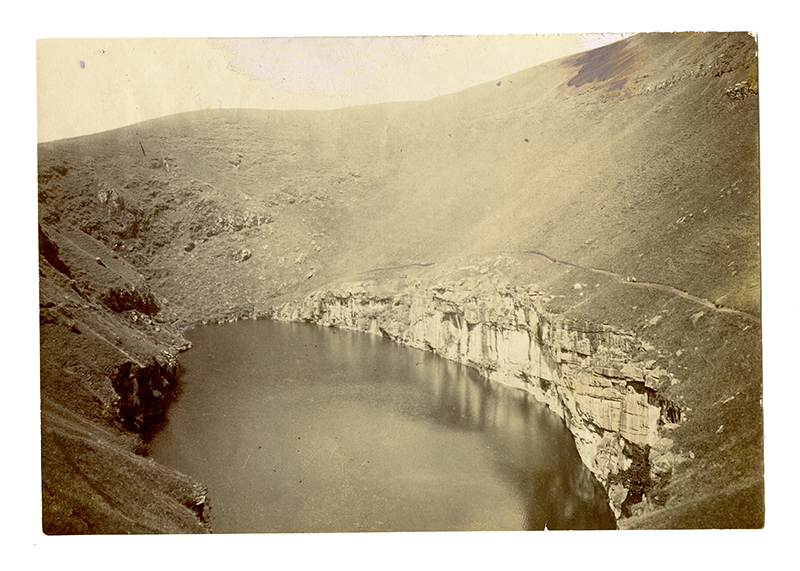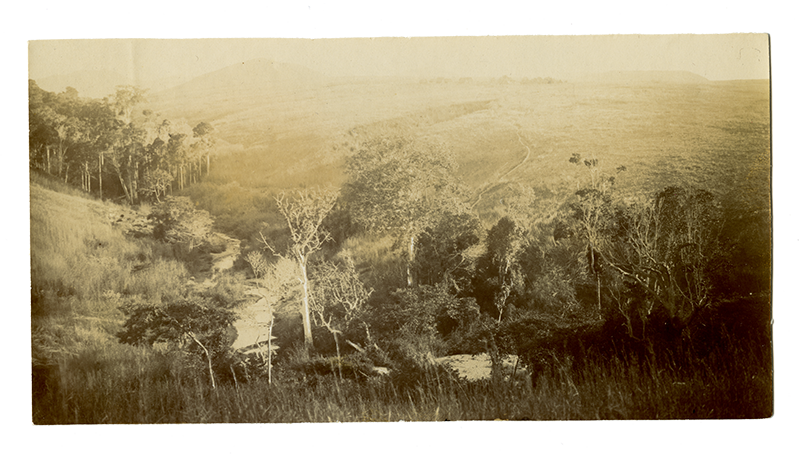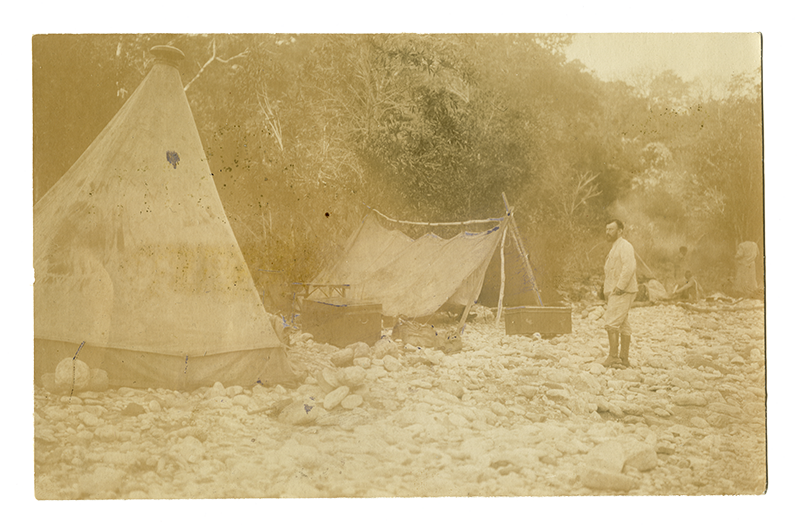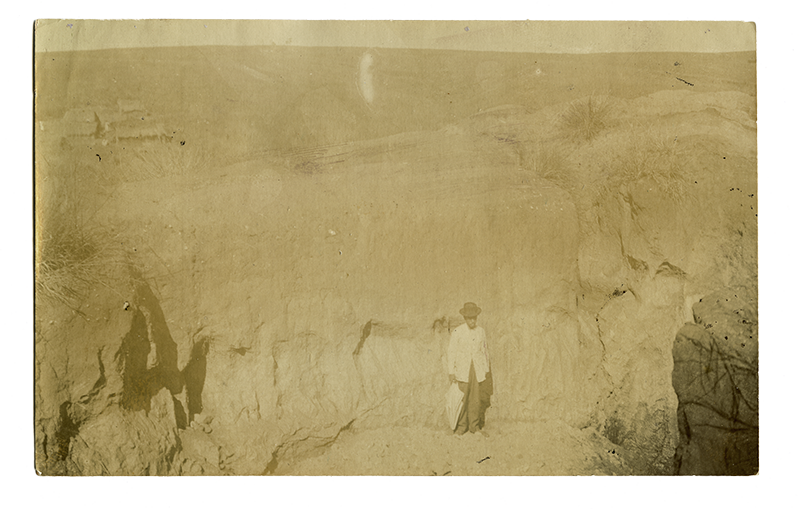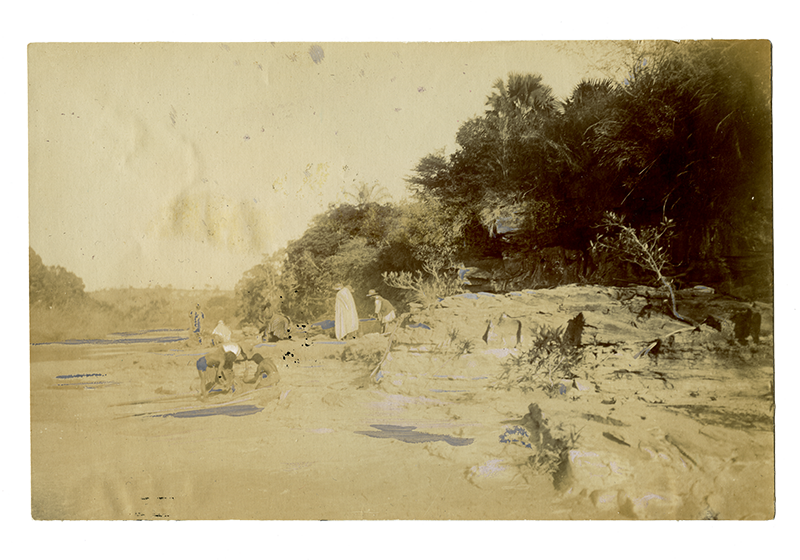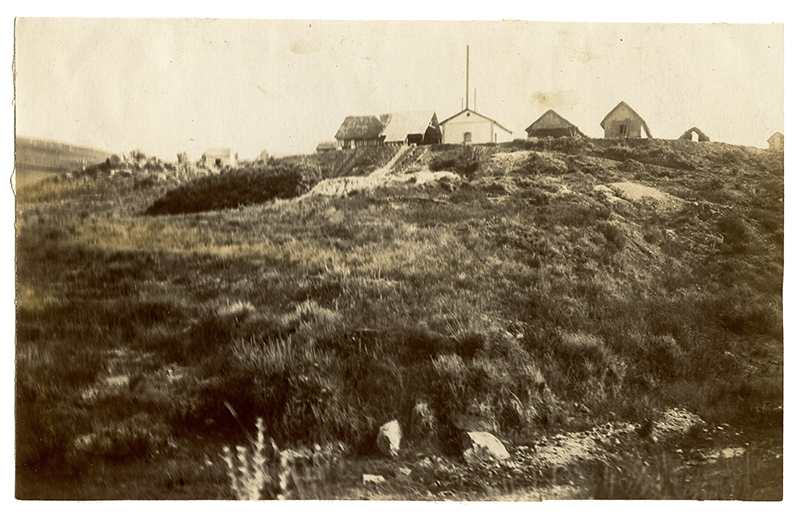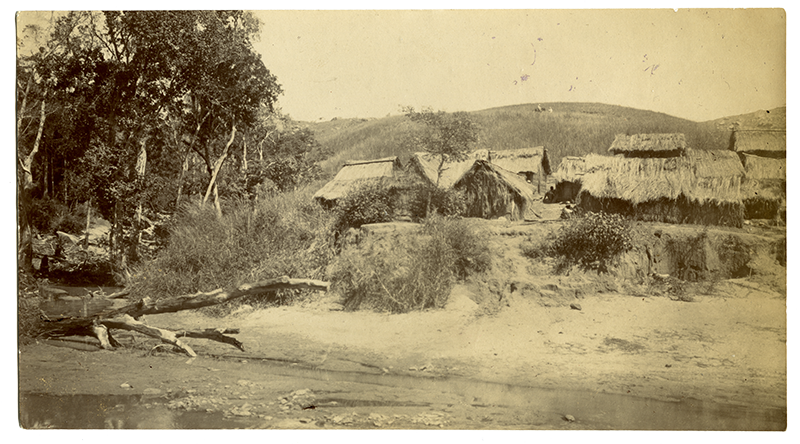Madagascar oil sands prospection
A 15 pages album containing early 1900’s vintage prints of prospectors looking for crude bitumen on the west shore of Madagascar. The oil-producing land extends to Madagascar over 1,200 kilometers, and the oil fields have been progressively increased. As early as 1889, deposits were reported from the region of Mbrafenobé in the center of the Sakalave country, but it took about ten years before serious surveys were undertaken. The natives of the province of Morondava (the western region of the great country) had, well before the passage of our prospectors, noticed the outcrops of the bituminous sandstones, which they called, by the name of Sakopanjy, their rivers and the villages with which they observed bitumen flows. Oil sands, also known as tar sands or crude bitumen, or more technically bituminous sands, are a type of unconventional petroleum deposit. Oil sands are either loose sands or partially consolidated sandstone containing a naturally occurring mixture of sand, clay, and water, saturated with a dense and extremely viscous form of petroleum technically referred to as bitumen (or colloquially as tar due to its superficially similar appearance). Bemolanga is a large oil sands deposit in the onshore Morondava Basin of Madagascar. The deposit was discovered in the early 1900s but was known to locals for centuries. The field is located north of the Tsimiroro heavy oil field and east of the town of Morafenobe. The field is at 0–30 metres (0–98 ft) depth and about 120 kilometres (75 mi) from the coast.
